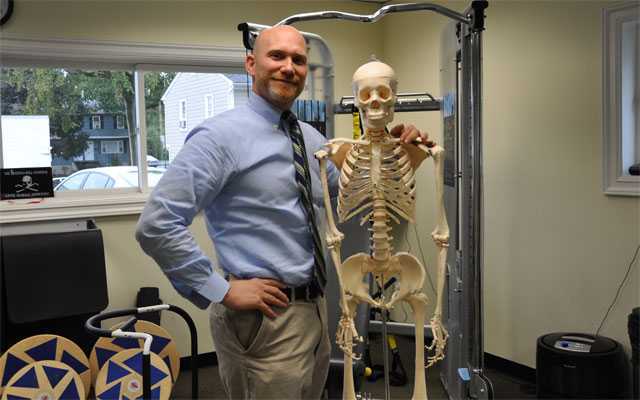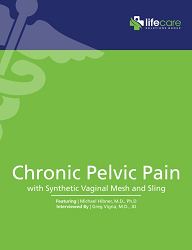
The first ever Herman & Wallace course in the United Arab Emirates wraps up next week, and the Institute is eagerly looking forward to brining our mission to some other exciting international locations in the next few months.
In early January, Herman & Wallace faculty member Michelle Lyons will be teaching Oncology and the Pelvic Floor, a course covering gynocological, colorectal, prostate and testicular cancers and current cancer treatments and their implications for the pelvic floor at Mullingar General Hospital in Westmeath, Ireland.
Following that course, Michelle will be traveling to Kuwait City, Kuwait to teach a similar seminar to a group of women's health physiotherapists. The Kuwait course will focus on Oncology and Women's Health and will cover gynocologic, colorectal and breast cancer treatment.
In February, Michelle will return to Ireland to teach Herman & Wallace's Pelvic Floor Level One course at the School of Health Sciences at the University of Ulster.
We are so proud to have an international faculty member spreading the pelvic rehab gospel across the globe!
If you would like to catch Michelle teaching stateside, she will be instructing Care of the Pregnant Patient in Houston, TX in April and Care of the Postpartum Patient in Salt Lake City in October, two courses she helped develop with the rest of our team of faculty Pregnancy and Postpartum experts, or, as we call them, "Preg-perts". These courses are brand new in 2013 and we are excited to be offering these expanded course topics!

The Women's Action Initiative is an organization whose mission is to "empower women to prioritize pelvic and perinatal health as an integral element of their overall well being and quality of life". Founded in 2008 by Angela Hughes Halliwell, a mother of two, the WAI is currently waging a campaign to combat the effects of obstetric fistula in the Democratic Republic of Congo.
Currently, millions of women in the Congo are living with unrepaired obstetric fistula caused by inadequate medical care during labor and delivery. The consequent tearing between the vagina and bladder, the vagina and rectum, or both causes leakage between the tissue that results in urinary and fecal incontinence.
Women with fistula are often mocked, ridiculed and isolated for their incontinence, and are sometimes abandoned by their families and husbands.
The WAI is currently raising money to send a team of three women's health physical therapists and a urogyn surgeon to Goma to treat, rehabilitate and educate these women. Their goal is to raise $50,000 for this endeavor.
Herman & Wallace support this mission and has made a donation towards this project. If you would also like to donate, you can do so here.

Institute founder and faculty member Holly Herman is jet-setting yet again! This time, she is teaching an 11-day intensive seminar on women's health and pregnancy and postpartum for physiotherapists in Dubai, United Arab Emirates.
There are 26 participants in this course, all of them women, who hail from India, Pakistan, Baharain, Indonesia, UAE, Saudi, UK, and Oman.
The intensive course will cover topics from Herman & Wallace's Pelvic Floor Level 1, 2A and 2B and 3 courses, as well as our Pregnancy and Postpartum series of courses. For the first time ever this country, female physiotherapists will learn internal evaluation and treatmetn techniques for female patients, as well as using biofeedback to assess pelvic floor patients.
We are elated to be able to bring the mission of the Institute to such a broad audience across the globe!

In a new committee opinion, the American College of Obstetricians and Gynecologists (ACOG) wrote that birth control pills should be sold as an over-the-counter drug, meaning "the pill" would be available to women without a doctor's prescription or a preliminary medical examination.
According to ACOG, unintended pregnancies accounted for 50% of all American pregnancies in the past 20 years, a rate that is "unacceptably high", according to ACOG. According to the Institute of Medicine, women with unintended pregnancy are "more likely to smoke or drink alcohol during pregnancy, have depression, experience domestic violence, and are less likely to obtain prenatal care or breastfeed. Short interpregnancy intervals have been associated with adverse neonatal outcomes, including low birth weight and prematurity, which increase the chances of children’s health and developmental problems."
"A potential way to improve contraceptive access and use, and possibly decrease the unintended pregnancy rate, is to allow over-the-counter access to [oral contraceptives]," the Committee on Gynecologic Practice wrote in the opinion.
Concerns regarding the use of birth control pills include their being linked to increased risk of blood clots and venous thromboembolism (VTE), a potentially deadly condition. The committee says that the risk is, however, "extremely low" and that only 3 out of every 10,000 women using oral contraceptives experience VTE, lower than the rate of women who experience VTE while pregnant or after having just given birth. (Abstract). ACOG says that women should self-screen for most contraindications to oral contraceptives using checklists and that a doctor's screening should not be required.
Other concerns cited are that, when no longer required to visit a doctor in order to obtain a prescription, many women will not receive the pelvic exams, pap smears and STD tests which they would typically receive when seeing a doctor to obtain birth control.
While ACOG asserts that making birth control available over the counter will lower the over-all cost of the pills (on average, uninsured American women spend $16 a pack for the pill) some worry that, when no longer covered by insurance as a prescription drug, the cost of their birth control will actually go up.
This opinion, though ground breaking, is unlikely to change the way oral contraceptives are dispersed in the immediate future. Changing the availability of birth control pills would require drug companies to seek permission from the government to sell the pills without a prescription, and it is unclear if any companies will do so.

Congratulations to Herman & Wallace faculty member, Peter Phillip, who was recognized in his community for his stellar work as a therapist. The New Canaan Advertiser writes, "if you end up at Philip Physical Therapy on Vitti Street, you’re in good hands". (Read the full article HERE)
Peter developed two courses which he instructors through Herman & Wallace, Sacroiliac Joint and Pelvic Ring Evaluation and Treatment and Differential Diagnostics of Chronic Pelvic Pain: Interconnections of the Spine, Neurology and the Hips. Peter is also an item writer and Subject Matter Expert developing our Pelvic Therapy Practitioner Certification Exam.
Way to go, Peter!
Pelvic Rehab Report from Guest Blogger, Jillian Beaulieu, DPT, CYT

OK, before I discuss the inspiration for the title of this blog, a brief anatomy and physiology lesson:
In terms of anatomical location, the ovary is deeply embedded and protected within the ovarian fossa in the crowded lateral wall of the pelvis on either side. Each ovary is fairly small, each one being only approximately 3-5 cm during childbearing years. Female ovaries are analogous to male testes in that they are both gonads and endocrine glands that play a big role in reproductive function. Several paired ligaments support the ovaries. The ovarian ligament on either side connects the uterus directly to the ovary. The posterior portion of the broad ligament forms the mesovarium, which supports the ovary and houses its arterial and venous supply. The suspensory ligament of the ovary (infundibular pelvic ligament) attaches the ovary to the pelvic sidewall. Nerve supply to the ovaries runs via the suspensory ligament of the ovary provided through the ovarian, hypogastric, and aortic plexuses. Superior to the ovary lies the small intestine and cecum (right) or sigmoid (left). The bladder and round ligament reside anterior to each ovary. Inferiorly there is the broad ligament and parametrium. The rectum and ureters are behind each ovary. Laterally, the suspensory ligament, obturator nerve, ureters, iliac vessels are found and medially the fundus of the uterus. Wow!
Physiologically, the two small ovaries have a big job to accomplish every month in two phases, follicular and luteal. The follicular phase involves follicle development and growth with the goal of releasing a mature follicle to be fertilized within the uterine tube. Additionally, the ovaries are responsible for the production of female sex hormones estrogen and progesterone. They are busy factories that are constantly in movement and require a significant amount of organ mobility within the pelvic cavity. Given the latter information and without discussion of the many possible underlying causes of ovarian pain, there is no wonder that connective tissue and mechanical tightness or adhesion in the periovarian and surrounding structures may cause ovarian pain and dysfunction.
Thank goodness Ramona Horton, MPT recently taught me how to address these issues through Mobilization of Visceral Fascia for the Treatment of Pelvic Dysfunction: Level II!
Recently I found myself with quite a few patients with diagnoses involving ovarian pain and dysfunction that led to an endless list of other concerns for them. For three of my patients I have found the techniques that I learned in this course to be particularly valuable, and that is only in the three weeks since I took the course! For the patients I first ruled out kidney, bladder, small intestine, and large intestine involvement and treated with techniques such as pubovesical ligament mobilization and ileocecal valve induction as appropriate. I also looked at the kidneys, obturator nerve, and uterus/cervix due to their direct connections. I found techniques such as broad ligament mobilization and cervical-ovarian mobilization profound for freeing the periovarian structures. Finally, I have been concluding each treatment with tubo-ovarian induction for establishing motility of the periovarian structures by “surfing the wave.” Interested and intrigued? I cannot recommend taking this course enough!
Our partners at Medbridge Education are offering the chance to watch one chapter of our course on pelvic floor exercise cueing for free.
In this clip, Institute founder Kathe Wallace demonstrates techniques and instructs on how to confidently cue exercises for your next pelvic rehabilitation patient. Each cue helps patients identify where they need to contract or relax their pelvic musculature.
Click HERE to watch this chapter for free and learn more about the full list of online offerings available through Herman & Wallace and Medbridge Education.

Your Pace Yoga is a home yoga program that was designed by Dustienne Miller MSPT, WCS, CYT,who is a board certified women’s clinical health specialist in physical therapy and Kripalu Yoga teacher.
This program is intended for men and women who are healing chronic pelvic pain. The DVD video weaves together breath work, meditation, body awareness, and gentle yoga postures. This stress relieving program can be practiced in as little as twenty minutes, making it possible for the patient to fit into daily life.
The DVD can be purchased HERE
Dustienne also has a blog, Your Pace Yoga, which provides resources and information about yoga, pelvic pain and wellness.
Keep up the great work, Dustienne! The Institute is proud to endorse these excellent clinical and patient resources!
Life Care Solutions Group Publishes Free eBook for Women with Chronic Pelvic Pain
Experienced Gynecological Surgeon Michael Hibner, MD, PhD, has released a free eBook for women with Chronic Pelvic Pain. The eBook, written along with Greg Vigna, MD, JD, contains important information about chronic pelvic pain, especially that onset by Synthetic Vaginal Mesh complications. PR News wire is reporting that Life Care Solutions Group has published this eBook as a next step guide toward healing from Pelvic Organ Prolapse and Stress Urinary Incontinence.
Herman & Wallace offers many continuing education courses that can help therapists treat this under-served clientele. We are especially proud of our Differential Diagnostics of Chronic Pelvic Pain course, which empowers participants to diagnose and treat the many causes of chronic pelvic pain.
Herman & Wallace is excited to announce that we will be offering a Pelvic Floor Level One course this year in Birmingham, UK!

This course will be hosted at Coventry University and taught by Michelle Lyons, PT, MISCP.? Unlike our usual PF1 courses, the Birmingham course will be a two-day event, starting on November 30th.
Michelle, who is based in Ireland, had this to say about the course ?[Pelvic Floor Level One is] is of the highest quality and the clinical usefulness is immediately applicable?I worked with Siv on teaching PF1 in Belfast in February of this year - it was a big success and there is nothing of comparable quality being taught in England so we thought the time was right. ?Gerard Greene, who will be organising the course, is a fantastic clinician himself, and recognises the importance of assessment and treatment of pelvic floor dysfunction in promoting women's health.?
H&W has made an effort to offer courses outside the U.S.? As we discussed in a previous Pelvic Rehab Report, this September, Founder Holly Herman will be teaching a course in Chile.
Michelle frequently teaches around the world.? About the prospect of teaching this course, she had this to say:
?I love teaching! ?I am very passionate about women's health, especially pelvic health, and to share this information with other clinicians and see them get excited about this work is such a reward for me. ?I have taught all over the world - Europe, the US, Canada and the Middle East, but I am especially happy to bring this work to England. ?I have been a PT for twenty years, working in a variety of clinical settings and I really believe the PT'?s in the UK will appreciate the magnitude with which we can help women with pelvic floor dysfunction - we really do change people's lives with our work.?
Personally, we want to thank Michelle for all her hard work in organizing and teaching this course.? Thanks so much for all your hard work Michelle!

















































